A China briefing from one of the West’s best-connected experts
Summary: This post provides a deep briefing about China from a major expert. It’s long and somewhat technical, but of the quality that executives and officials pay a lot to get. {2nd of 2 posts today.}
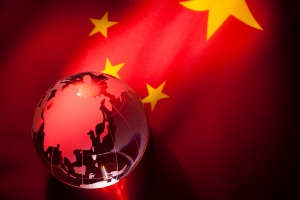 The depth of the leadership’s intent to reform the country’s financial system, restructure industry and to internationalise the RMB (its currency) is largely unappreciated and/or misinterpreted by the media and investors.
The depth of the leadership’s intent to reform the country’s financial system, restructure industry and to internationalise the RMB (its currency) is largely unappreciated and/or misinterpreted by the media and investors.
What is starting to take place is nothing more than reshaping the country and in so doing that of the world.
To understand how serious and widespread will be this transformation we must have an idea of President Xi’s own philosophiesandobjectives.Theycentre around four dynamics:-
He sees himself as the saviour of the party and the country since corruption had grown so deep and widespread that it threatened social stability.
By reaching back to Mao’s Mass Line philosophy he has got the middle class and the greater mass of population on his side even though others may seek opportunities to unseat him. He has probably got enough cards in his hands to stop any such move.
The President wants to develop a more equal society where the income and wealth divide are narrowed. The future of the real estate sector is fundamental to this change. No significant rescue will be mounted so allowing private sector developers to fend for themselves with the State sector being readied to prevent any crash in prices.
The president is shifting the country to the left of centre implying that state-owned enterprises (SOEs) will become the cornerstone of growth with the private sector encouraged to join the state sector.
There is an international timetable that the leadership must work within to effect this transformation. It is the autumn meeting of the IMF where once again the proposal to allow China’s currency to join the IMF’s special drawing rights ( SDR) comes up for Board approval.
America and Japan between them have 23.3% of the votes. China is playing hard ball with the remainder to ensure that the resolution is passed.
To help the proposal being passed China will open up its capital account and will make the RMB at least partially convertible by the time of the meeting, at least enough to satisfy the requirements of the IMF articles.
Other moves will mean that credit conditions will be tight in the second half of the year forcing bankruptcies and failures to accelerate as an essential part of bringing price power back to the manufacturing sector.
Fiscal policy is focusing on very specific infrastructure projects that will bring added value to the country; and the currency will appreciate against its trade weighted index.
The implications of a successful SDR resolution will be widespread internationally and domestically in China.
One such implication is that central banks and financial institutions will have to sell dollars to make way for the RMB. Another is that de facto the dollar will start losing its dominant role in trade financing.
Another is that India supports China’s view that a Washington centric world is no longer appropriate for world stability and that a multipolar world should be structured.
China’s monetary policy continues to be prudent. The cuts in required reserve ratios(RRRs) are not intended to stimulate the economy but to help liquefy the banks given the huge demands on them for additional working capital and because they know what is coming down the line.
Real interest rates remain very high given that PPI fell by 4.6% in March implying that real interest rates were 10.8% in March. Credit remains very difficult within the SME sector.
The cuts in interest rates are partially for this reason and because with the opening up of the capital account interest rates must fall towards international levels or risk a serious inflow of capital.
In summary, the leadership is putting China on the road to greatness but having first to suffer the consequences of previous governments’ love affair with credit.
(2) Introduction
We left Beijing last Sunday under clear blue skies with no sign of the city’s usual smog perhaps due to the steel mills in Hebei province running at low capacity utilisation levels or because the prevailing winds were coming from a different direction.
Beijing too was not the usual cold and colourless city that I have known for more than twenty years. Trees that have been planted since then have matured; gardens abound with spring flowers adjacent to the roads and highways and fences are covered with climbing roses. Change has indeed taken place.
(3) Monetary Policy
Change too is happening within the economy as this leadership seeks to undo the damage caused by previous governments who believed that credit growth brought economic salvation. For instance, the following numbers show the total credit (using total Social Financing data)required to achieve RMB 1 of GDP:
2005 1.63
2007 2.27
2009 4.04
2010 3.44
2012 2.94
2014 2.58
In fact the latest data for total social financing for the first quarter of 2015 was 24% lower than a year ago and for all of 2014 it fell by 5.1% compared with 2013.
M2 growth continues to slow from March 2014’s 12.2% to this year’s 10.2%.
M1 is money being held ready for use in anticipated transactions. It should correlate well with GDP which it did from 2003 through 2008. Since then the two have diverged remarkably. In
2014 M1 rose by 5.4% close to our GDP forecast of 5% for that year. In the 1st quarter of 2015 M1 rose by only 2.9% and in April by 3.7% YOY in tune with our GDP forecast of between 3-4% for the first four months of this year.
Corporate demand deposits account for over 80% of M1. The latest numbers we have for February this year show a rise of just 2.8% compared with 2014. We suspect that most of these deposits originated from large SOEs with the SME sector experiencing falling deposits.
What the data is telling us is that monetary policy remains prudent as the governor of the People’s Bank of China (PBOC) and the prime minister keep repeating in contrast to the media’s view that the PBOC is easing.
The reductions in RRR’s are less to stimulate the economy and more to liquefy the banks which are under enormous pressure from a large junk of industry (43% of the economy) for additional working capital and because the authorities know what is coming down the line (more on that subject later). Anything from 25% to 50% of industry is under water according to our friends, or around $2207-1104bn. These are the two reasons why banks are basically reluctant lenders.
There are three main reasons for the cut in interest rates.
Real borrowing rates remain high given the weakness of CPI and with PPI falling by 4.6% versus 2014 in March. In fact real rates were 10.8% in March according to the FT, an extraordinary high figure.
Falling rates make it easier for borrowers to repay.
Possibly the most important reason is that with the opening up of the capital account by year-end rates must fall closer to international levels or else risk a flood of capital inflows.
In the real economy with banks being such reluctant lenders there has been little or no reduction in borrowing rates within the SME sector: credit conditions remain very difficult and expensive. And for the first time in decades real deposit rates are positive. Should this trend continue which is bound to be a driven-policy, cash rich companies will be encouraged to keep funds with the banks rather than invest in real estate or new manufacturing capacity.
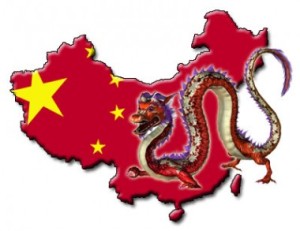 There are two dynamics driving economic policy. The first is domestic. It is to restructure industry, meaning to shut down surplus capacity because with so much surplus capacity in virtually every sector and sub-sector there is no pricing power and thus an inability to earn real profits, often not those that are published (more later).
There are two dynamics driving economic policy. The first is domestic. It is to restructure industry, meaning to shut down surplus capacity because with so much surplus capacity in virtually every sector and sub-sector there is no pricing power and thus an inability to earn real profits, often not those that are published (more later).
In each of these sectors the National Development and Reform Commission (NDRC) has chosen companies around which restructuring will take place with the rest in that sector being left to fend for itself or fail. The chosen companies effectively have access to whatever credit they need and at rates better than the market.
Profits now have to be earned instead of being contrived because the PBOC has shutdown what we term the illegitimate use of Letters of Credit (LCs) by corporates continuously rolling them over to hide negative cash flows from banks. Nobody really knows the extent of the misuse of LCs but friends who have had access to data from different sources indicate that the sums are extraordinary large perhaps as much as 25% of GDP.
One implication is that there must be large unreported stocks of different commodity imports and a second is that profits of many companies are not what are published. Now the skeletons are starting to surface.
In sum, beneath the headline profit numbers sits a very soft belly for many companies.
China’s total debt to GDP is one of the highest in the world. Local government debt has largely grown because central government was reluctant to finance the essential needs of infrastructure development to act as the platform for growth. Of course there were misappropriations, the empty cities and roads and railways to nowhere, but in essence the spending was central to building an industrial base. The problem was that much of this financing was opaque.
Now, to quote Moody’s ‘the central government’s announcement that regional and local government (RLG) bonds qualified as collateral for borrowing from the central bank supported the issuance of $8.6bn at an average spread of less than five basis points above yields of sovereign bonds of comparable maturities.
The State Council also supplemented the debt-for-bond swap program by allowing RLGs to use budgetary revenues for bridge financing RLG-sponsored projects to avoid disruption caused by delayed issuance of RLG bonds. To guard against misuse of the bridge financing mechanism, the new policy requires that bridge loans must be surpluses in excess of 1.5 months worth of expenditures. This conditionality is particularly stringent given the 9.6% decline of RLG revenues during the first four months of this year caused largely by 38.2% decline in land sales. ‘
Second are the international developments. The leadership fears that a global financial crisis is coming and is positioning itself to withstand the storms that will follow. This means accelerating the process of ‘cleaning house’ in the second half of this year. In fact, we are told that this process alone could ignite the crisis. Exports to China will weaken further and foreign banks exposure to corporate China (around $800bn) will come under stress.
Part of internationalising the RMB, China will further open up its capital account and make the RMB convertible (at least partially by end 2015). They wants the RMB to become part of the IMF’s Special Drawing Rights (SDR). These are crucial developments in the international field.
At present there are only a few capital account items which are not completely convertible, in fact according to the IMF classification out of 40 items only 5 remain inconvertible. These five items mainly involve individual cross-border investment and the issuance of shares and other financial instruments by non-residents on domestic markets.
China will launch a number of reforms to address the five issues mentioned earlier so as to further promote capital account liberalisation and in so doing make the RMB a more freely usable currency. Six measures will be taken to advance this development.
Channels will be established for cross-border investments by individual investors.
China will introduce the Shenzhen-HK Stock Connect program allowing non-residents to issue financial products on the domestic market except for derivatives.
Foreign exchange regulations will be revised to remove requirements for ex-ante approvals in most cases and an effective system for ex-post monitoring and macro-prudential management will be built up.
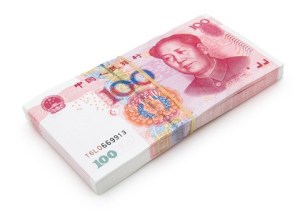 Measures will be introduced to further facilitate access to China’s capital markets by foreign institutions.
Measures will be introduced to further facilitate access to China’s capital markets by foreign institutions.
More measures will be introduced to facilitate the international use of the RMB by removing unnecessary policy barriers and
Steps will be taken to ensure sound risk prevention.
(5) The RMB to Join the SDR?
The consequences of China’s move to convince the board of the IMF that the RMB should be part of the SDR are immense. It should be remembered that the proposal was first put forward in 2010 and was accepted by all board member countries except for the USA. Washington has continued to deny Beijing’s desire for the RMB to be included in the SDR and was actually given a deadline of January 2015, which was not met. The proposal has remerged and will be put to the IMF board once more at its autumn meeting.
Washington has already misjudged the world’s acceptance of the BRICS Development Bank, the BRICS Currency Board and the AIIB, all of which America tried to stop being developed. Thus, it will have more difficulty in voting against the RMB-SDR proposal. Should it support the proposal central banks and financial institutions will have to sell dollars to make way for the RMB in their portfolios. And should Washington not agree to the RMB being part of the SDR, support for and trust in the US dollar will weaken leading anyway to dollar selling.
America has 16.3% and Japan 7% of the votes in the IMF. China is playing hard ball with the remaining 76.7% by basically saying if you don’t vote for us we will take that into consideration in future relationships.
India supports China’s view that a Washington centric world is no longer appropriate for world stability and that a multipolar world should be structured. This implies that the US dollar should no longer be the central pivot around which global trade is conducted and that America’s fiat currency world will only create more instability.
Over the weekend China announced the establishment of a gold fund led by the Shanghai Gold Exchange (SGE) with an initial capital of RMB 100 billion to facilitate purchases of the sixty or so countries along the Silk Road. This is part of China’s strategy to establish a currency or a number of currencies outside the world of fiat exchange rates as we have been saying for a long time.
Domestically there could be serious ramifications. A note that we received of the PBOC’s governor’s speech to the board of the IMF on 18th April indicated that if the RMB does join the SDR the country’s stock market and real estate bubbles will burst (which fits our scenario). These comments were not part of his formal speech (we have a copy) but must have been said during the Q&A session.
Moreover China has planned for its companies to invest abroad with targets already drawn up from what we hear. Joining the SDR as part of internationalising the currency will accelerate this process. Then with the capital account being opened up much more there will be a twoway flow of capital into and out of China as the PBOC is deepening China’s capital markets and as China seeks investments overseas.
The bottom line is that China is not seeking to make its currency freely convertible but will adopt a system of managed convertibility having drawn lessons from the global financial crisis but these measures will go a long way to achieving that objective.
(6) State of China’s Economy
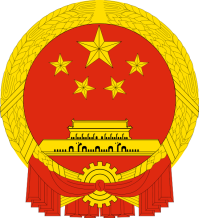 Fundamental to understanding where China’s economy is heading is an appreciation of President Xi’s own philosophies. In talking with friends our understanding is:-
Fundamental to understanding where China’s economy is heading is an appreciation of President Xi’s own philosophies. In talking with friends our understanding is:-
He sees himself as the saviour of the party and the country as corruption had reached the stage of undermining real growth and alienating a large portion of the population. Social unrest would have been an inevitable outcome.
By reaching back to Mao’s Mass Line philosophy, best emphasised in the anticorruption drive, Xi has got the middle class and others on his side. At the same time some of the 1% who have prospered under earlier regimes are not only nervous of being caught up in the anti-corruption drive but may seek opportunities to unseat the President. In our own view the president is holding enough cards to prevent this from happening.
One area where discontent could mount is in the property market. Xi wants to see a more equal society where wealth and income are more evenly distributed. Thus he does not mind should private sector companies start failing within the real estate sector implying there is unlikely to be any recovery of any significance in this sector this year. The State sector is being readied to prevent prices from crashing.
These interpretations indicate that the president is slowly shifting the country to the left of centre. This too implies that SOEs will become the focus of growth and that the private sector will be encouraged to join the state sector. More centralised growth will be the final outcome.
The combination of the president’s philosophies, the need to reform and deepen the financial system and the imperatives of restructuring the industry sector (43% of GDP) into an international timetable that pivots in the autumn of this year suggests that the second half of this year could be open to some unpleasant surprises including:-
A deteriorating credit environment.
Monetary policy remaining ‘prudent’.
Accelerated failures and bankruptcies.
Fiscal policy that will disappoint the stock market by focusing FAI on specific projects.
A strong RMB especially against the trade weighted index.
No stimulus package for the real estate sector.
Skeletons surface from the ‘illicit’ use of trade finance.
This is no more than the need to ‘’Clean House’’ that began last year and must be undertaken if China wants to be a player on the big stage – which it does.
This chart produced by the NBS gives a better sense of what is taking place in the economy than the officially announced 7% GDP. The sense we get from our visits to and discussions in the economic trenches is that China’s economy has become bifurcated. The ‘old’ growth drivers have gone or have slowed which are basically inputs into the real estate sector and to traditional exports of low value added-goods. There are no signs of recovery in the second half either from the appliance sector or power cable industries.
The services sector has overtaken industry as the main driver of growth. Employment remains strong with NBS surveys showing that unemployment is no more than 5% across the country. In effect what industry is laying off the services’ sector is taking on. Moreover in some provinces where there is the risk of rising unemployment government is setting up retraining courses together with a social backstop.
The leadership has set out an ambitious plan to restructure the country’s manufacturing industry by 2025 by focusing on 10 sectors. It is in these sectors where real growth will be seen not what has been experienced. These are:-
Information technology
Numerical Control Tools & Robotics
Aerospace Equipment
Ocean Engineering & High Tech Ships
Railway Equipment
Energy Saving & New Energy Vehicles
Power Equipment
New Materials
Medicine & Medical Devices
Agricultural Machinery
(7) Demographics also tell their own story
The fact that the labour force is in secular decline works in government’s favour as it instils plans to restructure manufacturing.
Put another way the percent of population that is of working age drops from 74% in 2014 to 69% in 2024.
© Simon Hunt Strategic Services – SHSS.com
This document has been prepared with care. However, Simon Hunt (Strategic Services) Ltd makes no warrant of any kind in regard to the contents and shall not be liable for incidental or consequential damages, financial or otherwise, arising out of the use of this document. The contents of this report are for the sole use of the recipient and may not be transmitted in any form whatsoever without prior permission.
Hunt began his career in Central Africa as PA to the chairman of Rhodesian Selection Trust, one of the two large copper companies in what was then called Northern Rhodesia. He then joined Anglo American Corporation of South Africa following which he helped start up CIDEC, a new copper producer organisation where he conducted end-use studies for Europe. In 1975 Hunt founded Brook Hunt, one of the world’s leading analysis and consultants about mining and metals markets (now part of Wood Mackenzie).
In 1996 he left Brook Hunt to form Simon Hunt Strategic Services. Simon has spent 2-3 months a year for the past 20 years visiting factories across China and has an office in Beijing.
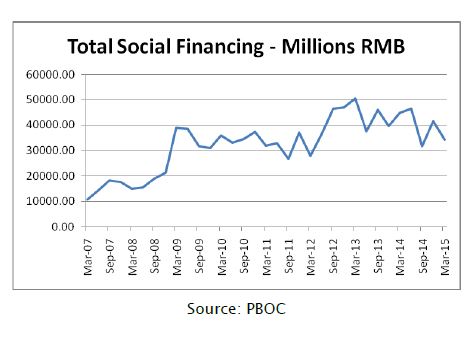
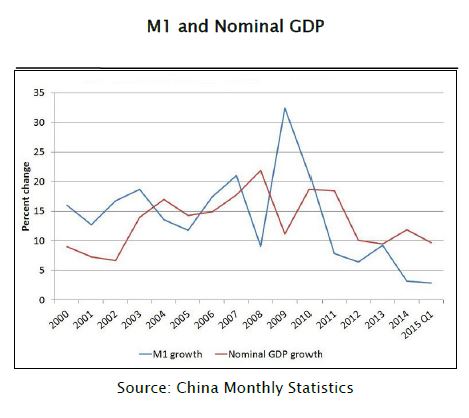
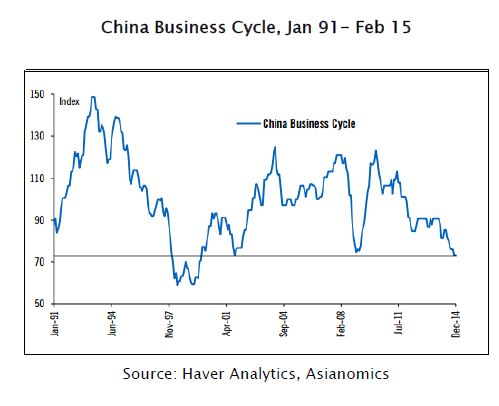
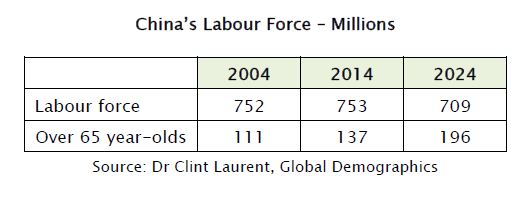
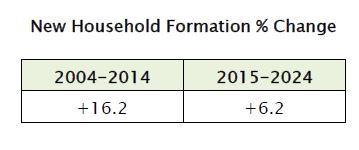
No comments:
Post a Comment